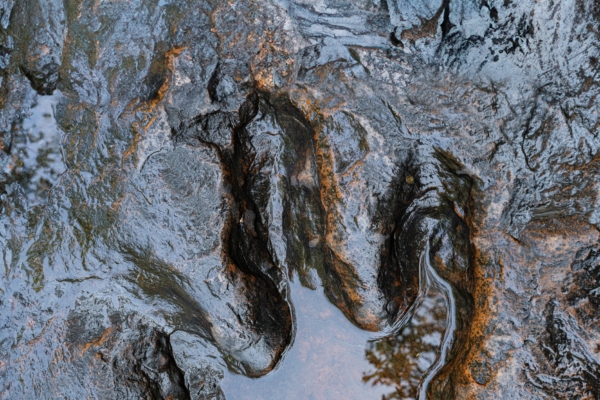Ancient biologists recently discovered two sets of corresponding early Cretaceous dinosaur footprints in Africa and South America. One set was found in Brazil, while the other was found approximately 3,700 miles away in Cameroon. These over 260 footprints reveal traces of terrestrial dinosaurs from millions of years ago, when Africa and South America were still connected before their separation, allowing dinosaurs to freely roam between these two continents.
This research finding was announced on August 23 by the New Mexico Museum of Natural History & Science.
“We confirmed that these footprints are quite consistent in age,” said Louis L. Jacobs, a paleontologist at Southern Methodist University and a co-author of the study. “From their geological and tectonic background, they are also very similar. In terms of their shape, the footprints are almost identical.”
Studying these dinosaur footprints fossils is crucial because they can provide clues about the walking or running speeds of dinosaurs and even possibly reveal the appearance of their skin. Compared to more common body fossils like teeth or bones, footprint fossils often offer evidence of interactions between these ancient creatures and their environment, potentially indicating the nature of their surroundings.
The research team believes that most of the footprints were left by three-toed dinosaurs, belonging to theropods. Some footprints may also belong to sauropods or ornithopods. These footprints were left in the mud of several ancient rivers and lakes, formed on a massive single continent called Gondwana around 120 million years ago. Gondwana separated from the larger supercontinent Pangaea. Before the eventual breakup between Africa and South America, lakes formed in these basins.
“Plants provided food for herbivores, forming a food chain,” Jacobs explained. “The mud deposits left by rivers and lakes contain dinosaur footprints, including those of carnivorous dinosaurs, proving that these valleys were specific pathways for life to cross continents 120 million years ago.”
Around 140 million years ago, South America began to separate from Africa. This plate rift created huge fissures at weak points in the Earth’s crust, known as rift valleys. As the plates under the two continents gradually moved apart, magma from the mantle surged to the surface, forming new oceanic crust and causing the continents to drift apart. Eventually, the South Atlantic Ocean filled the gaps between these new continents.
In the Borborema region of northeastern Brazil, scientists discovered dinosaur footprints from South America; while in the Koum basin in northern Cameroon, footprints of African dinosaurs were found. Both locations holding these dinosaur footprints preserve geological evidence from when the continents split. These areas exhibit geological structures formed by the stretching of the Earth’s crust, known as “half-graben basins.” These basins contain ancient river and lake sediments and fossil pollen, indicating a history of around 120 million years.
“The youngest and narrowest geological connection between Africa and South America lies in the curved region of northeastern Brazil, precisely adjacent to the coastline of Cameroon along the Gulf of Guinea today,” Jacobs said. “These two continents are connected on this narrow passage, so theoretically animals on both sides could have crossed here.”

